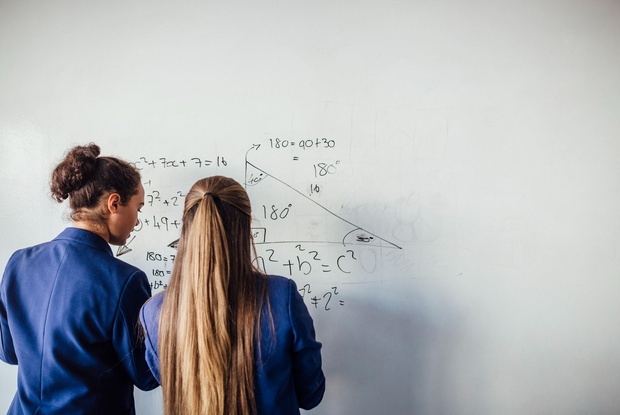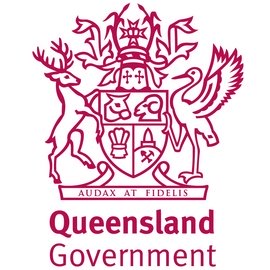Despite being endorsed by the Australian Association of Mathematics Teachers (AAMT), and currently spreading ‘like wildfire’ through the US education sector, Dr Peter Liljedahl’s Building Thinking Classrooms (BTC) practices simply do not add up.
So says Victorian school leader and author Dr Greg Ashman, who believes Liljedahl’s instructional approach, designed to get students ‘thinking’, is another dangerous fad that will only misguide teachers and result in years wasted as they work to undo the damage if schools adopt it.
“It is extremely popular,” Ashman tells EducationHQ.
“It’s run like wildfire through North America … I’ve got people contacting me all over the US and saying that this is the new thing that they’re being required to do.
“And now it’s in Australia, endorsed by organisations like the AAMT.”
Ashman said given the scale of its uptake and the backing bestowed by prestigious teaching bodies, it would be fair to assume BTC comes with a considerable weight of evidence to show it improves student achievement in maths.
Not so, he contends.
“This is indicative of education more largely, that we jump on these fads even if there’s not a very, very strong evidence base.”
Promising to “create an ideal setting for deep mathematics learning to occur” Liljedahl’s approach draws on 14 practices that are designed to foster deep thinking in maths and help students go beyond “rote memorisation and repetitive calculations”.
The Professor of Mathematics Education at Simon Fraser University in Canada and former high school teacher proposes that instead of thinking in maths lessons, too many students are “slacking, stalling, faking, and mimicking”.
“Even deeper research into this phenomenon revealed that in a typical lesson, only 20 per cent of students spent 20 per cent of their time thinking, while the rest of the students spent 100 per cent of their time slacking, stalling, faking, and/or mimicking,” he writes in the Mathematical Association of Victoria’s newsletter.
By applying BTC practices, which include enaging students in “highly engaging non-curricular tasks”, having students stand and work on vertical non-permanent surfaces (such as whiteboards or windows), and grouping students randomly to problem solve together, Liljedahl says teachers can turn “passive learning spaces” into “active thinking spaces” where students “think and keep thinking”.
But Ashman argues the approach is deeply flawed and runs contrary to explicit teaching – the approach we know works best to build students’ mastery of new concepts.
Liljedahl’s narrow definition of thinking as ‘being engaged in problem solving’ is problematic for starters, he suggests.
“This is something we’ve seen before – Peter Liljedahl has added some bells and whistles to it, and this is probably quite astute, because it looks different,” Ashman says.
“So, he gets the kids writing on mini whiteboards on the walls standing up, he’s got a way of assigning them to groups – he uses playing cards – and he’s developed a few novelties around the method, but the essential idea that kids should learn maths by solving problems is a very old one.”

Ashman, pictured, says the academic’s methods and objectives “exist in a self-referential bubble”.
According to the school leader, BTC is based on the bad idea that students should learn maths by copying what real mathematicians do.
Naturally, this doesn’t involve sitting in rows and solving problems a teacher has set.
Yet without strong foundational knowledge stored in long-term memory, novice learners will flounder in the kinds of situations BTC creates, Ashman adds.
“When you’ve got novices, you actually need to teach them things, not just let them get on with trying to solve problems – you actually have to teach them some strategies they can use to solve the problem…
“And that’s, in essence, why these approaches fall down because they just overwhelm students.”
Canadian maths professor Anna Stokke has also raised alarm on X over BTC and its increasing implementation in schools.
“The first time I heard about Building Thinking Classrooms, I thought ‘What a scam! Someone came up with an idea to have kids work in groups on whiteboards and school divisions are paying for pro-d on this…’
“At that time, I looked at the so-called research articles on BTC and found no substance to any of it. I wrote to the divisional consultant and told them all the problems with the method and challenged them to send me research that supports it. That didn’t happen, of course. Then COVID happened, so no more BTC at my daughter’s school and I thought that might be the death of BTC.
“Alas, BTC is picking up steam. It seems to be everywhere I look. Time to look into this again, I think,” Stokke concludes.
In August this year, AAMT is hosting Liljedahl for a two-day workshop titled ‘Leadership for Building Thinking Classrooms’.
Tickets for members cost $1695 (excluding GST), while non-member tickets are $1795.
“This intimate event offers a rare chance to learn from a global leader in maths education, ask questions and network with fellow passionate educators,” the event page reads.
Ashman says aside from supporting an approach that lacks evidence to show it actually improves students’ maths skills ‘as measured by a standardised assessment’, the training’s ‘rather expensive’ price means educators will have sunk so much money into it they will be reluctant to let the approach go.
People are also more likely to assume it’s worthwhile because of the financial investment involved, he flags.
“I think that is quite dangerous,” Ashman says.
“I mean, in terms of the research, what people will say is that [Liljedahl] has done a lot of research. And he has, and he’s written it up, but it's not effectiveness research.”
Ashman maintains the academic’s methods and objectives “exist in a self-referential bubble”.
“He has this standard of whether students are thinking, and then he tries his strategy in classrooms, and then his research is based on whether according to his definition, the students are thinking or not.
“It’s not really based on what you or I would see as normal outcomes, like the ability to solve problems better or heaven forbid, to do better on a standardised mass assessment.
“And that’s the sort of evidence that the AAMT should be looking at.”
Ashman fears that the blind adoption of BTC could be devastating for maths education in the long-term.
“Particularly if people are going off to be trained in it, they’re going to be then committed to it and they’re going to want to bring it back to their schools.
“It could be just another wild goose chase, the maths equivalent of whole language … and then we’re going to have to, at some point later down the track when it doesn’t work out, when we don’t see the benefits, we’re going to have to unpick it all.
“And then it’s going to be as messy as it has been unpicking whole language and balanced literacy,” he says.
EducationHQ has reached out to AAMT for comment.














